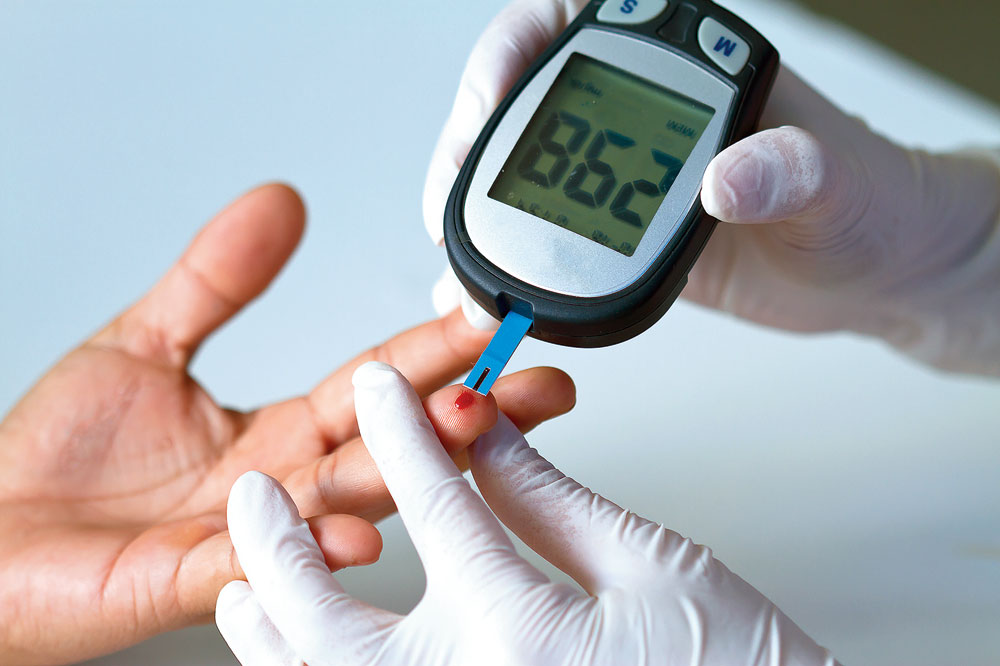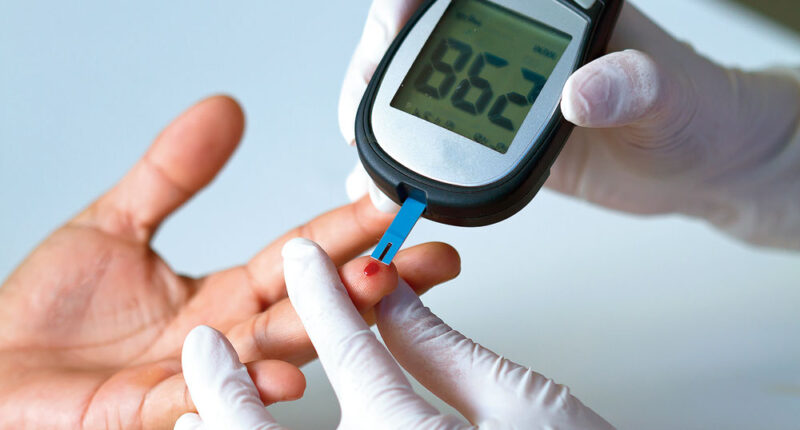The two main types of diabetes are type 1 and type 2. Type 2 is more common.
Both prevent the body from making and using the hormone insulin. Insulin enables the body to process blood sugar and ensures that it stays at a healthy level. If blood sugar or glucose levels get too high, it can damage cells and cause complications throughout the body.
According to the American Diabetes Association, 26.8 million people in the United States were diagnosed with diabetes in 2018. About 1.6 million of them had type 1 diabetes.
Meanwhile, they estimate that another 7.3 million people were undiagnosed with diabetes that same year. And in 2015, they report, about 88 million people had prediabetes — high blood sugar levels that indicate a person is at risk for diabetes.
Being able to spot the early signs of diabetes can help a person know when to seek care. Getting an early diagnosis and treatment can prevent long-term damage.
Signs and Symptoms
Some signs and symptoms of diabetes that common to both types include:
- fatigue
- hunger during or shortly after a meal
- weight loss, despite eating more
- extreme thirst
- frequent urination
- blurred vision
- slow healing of cuts and bruises
- tingling, pain, or numbness in the hands or feet
- acanthosis nigricans, an issue that causes skin on the neck, armpits, groin, and other areas to change color and texture, possibly becoming velvety
It is worth noting that factors such as age and overall health can affect how a person experiences these symptoms.
Type 1 Diabetes in Infants and Young Children
Young children are more likely to develop type 1 than type 2. A caregiver may notice.
- fatigue
- intense hunger
- unexplained weight loss
- vision changes
- yeast infections, which may present as a diaper rash
- a fruity smell on the breath
- unusual behavior, such as irritability, restlessness, or mood changes
Type 1 Diabetes in Adults
This condition usually arises during childhood, but it can appear at any age. A person should see a doctor if they develop:
- unexplained weight loss
- extreme thirst
- frequent urination
- blurry vision
- repeated yeast infections
- slow healing of cuts and bruises
Type 2 Diabetes
Many people only find out they have type 2 diabetes during a routine checkup. Others see doctors about symptoms of the condition or its complications.
Symptoms of diabetes-related complications include:
- Skin infections or rashes
- Eye and vision changes
- Pain, numbness, and weakness in the legs and arms
- Poor circulation and foot ulcers
- Thirst or dry mouth
- Fruity smell on the breath
- Kidney problems
Causes of Diabetes
Type 1 and type 2 diabetes have different causes
Type 1 Diabetes
Type 1 diabetes develops when the body’s immune system attacks the cells in the pancreas that are responsible for producing insulin.
When this happens, the body cannot make enough insulin to process and regulate blood sugar.
As a result, people with type 1 diabetes require lifelong insulin in addition to other treatment and maintenance strategies.
Health experts are still unsure of the exact causes, but genetic and environmental factors, such as viruses, may play a role.
Type 2 Diabetes
A person with type 2 diabetes either does not produce enough insulin or their body does not use it effectively. The latter is known as insulin resistance.
In a person with type 2, excess sugar builds up in the bloodstream, leading to symptoms and complications without treatment.
Type 2 diabetes usually develops in older adults, but it can affect younger people.
Diagnosis and Treatment
A doctor usually diagnoses diabetes by asking about symptoms and ordering blood tests, which may show elevated blood sugar levels.
If the person is not experiencing symptoms, the doctor may order follow-up tests to confirm the diagnosis.
Treatment depends on the type of diabetes. A person with type 1 needs to take insulin daily by injection or using a pump.

For a person with type 2 diabetes, a doctor recommends self-care strategies and other ways to manage blood sugar levels. This may include taking prescribed medications, including insulin.
It is important to follow the recommended treatment plan. Anyone having difficulty doing so or experiencing any side effects should immediately consult their doctor for guidance.









